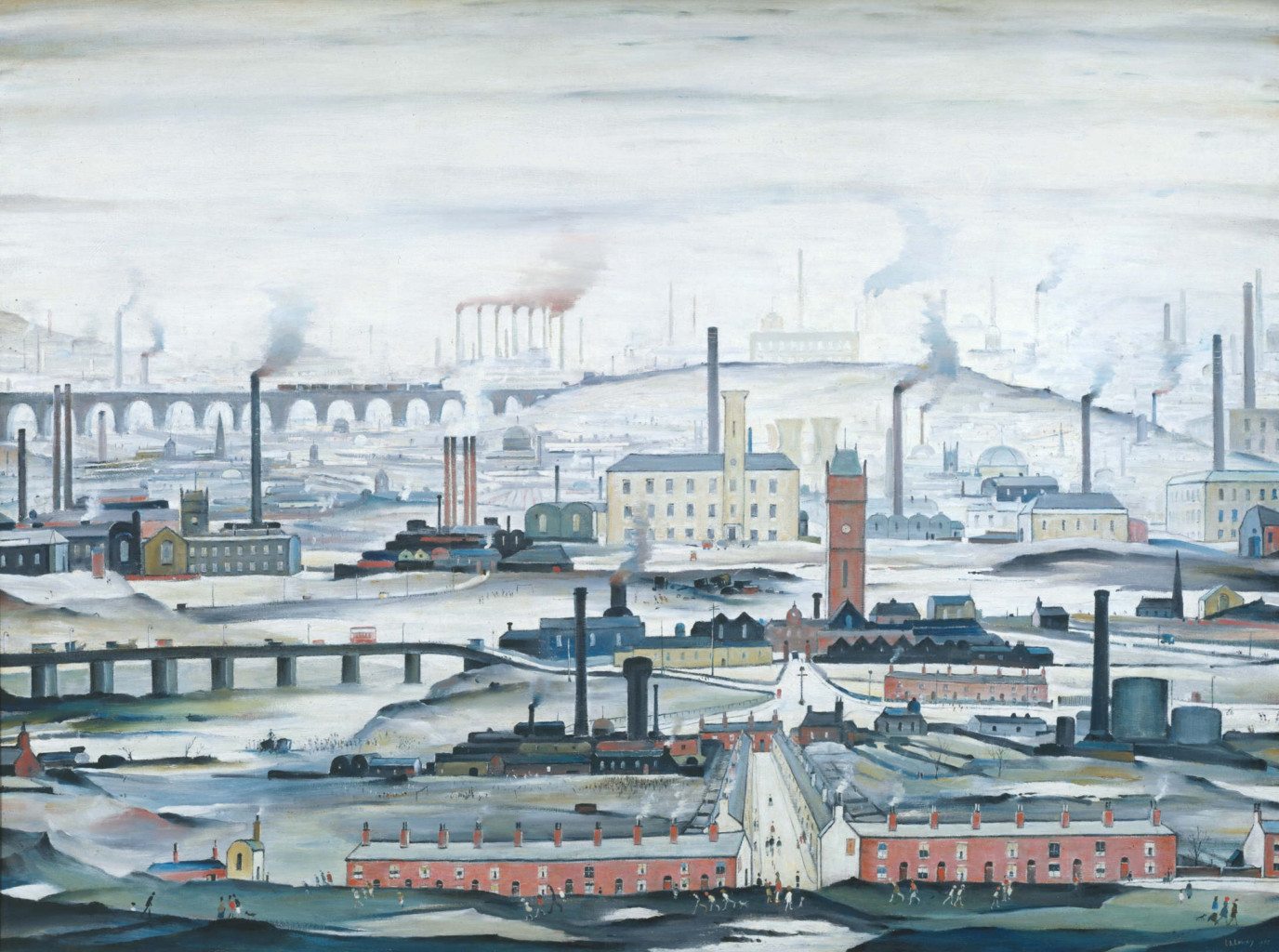Lowry and the Painting of Modern Life: Review
Though hailed the great painter of the Industrial Revolution, Lowry has been under much rhetoric of being an outsider, an overlooked artist and particularly one pushed away by the Tate. In fact, he has nearly always held a much more privileged position in British art than this view has supposed. He secured a national reputation in his lifetime from 1938, after being spotted by chance by a London dealer, and has rarely left Britain’s cultural eye since.
As a relative newcomer to Lowry’s works, the non-chronological, thematic curation of the exhibition made it more difficult to follow the artist’s career progression. This did in itself become an exciting quest, though, looking at dates and comparing the differences between his late and early work in each room. For instance, in some of his earlier work, such as ‘Coming out of School’ (1927) there is a misty wash over the painting, as though seen through a filter. There is also a flatness, as if the neatly rectangular buildings had been meticulously outlined and ruler-drawn in paintings like ‘Coming from the Mill’ (1930), without the deep perspective or depth of colour that seems to come into the later townscapes.
This exhibition begins with what the Tate deem Lowry’s most respected, smaller-scale works. There is also a room which offers comparisons between Lowry and the paintings of other ‘modern’ artists, such as Van Gogh, Seurat, Valette and Utrillo. Then there is a room of paintings depicting domestic disaster, entitled ‘Street Life: Incident and Accident’. By the time you reach this, the third room, you feel as though you have seen certain images a thousand times – the rosy, red-brick mills and chimney stacks, with obedient crowds of ‘match-stick men’, precise rows of identical houses and the whitened park in the foreground. Like the cramped and monotonous life in the slums and industrial outskirts, Lowry’s vision is repetitive.
It takes something different to make one stand out, so the stories evident behind the incidents draw interest. There’s a painting, entitled ‘An Accident’ (1926) about a suicide and a tenant eviction with a hospital surrounded by crowds gathering at the door. They are drawn to disaster in almost the same obedient manner as they flood to the mill or the football game in the paintings exhibited in the first room. The mannerisms and propensities of crowds intrigued Lowry, the masses being key a signifier in the ‘modern life’ of the exhibition’s title.
These individual incidents are symptomatic of the story told in the exhibition as a whole, of the collapse of the economy of Britain, the ‘workshop of the world’, in the early 1920s. As John Berger said in New Society (1966), the paintings show the recurring ‘production crises’ fed by failures in education and the inadequate technological advancement in transport, power and industrial plants, implied in the aspect of bleakness in many of Lowry’s paintings.
His work is not all dismal however, for example ‘Street Hawker’ (1929) presents a more colourful view of everyday street life. This painting is unusual; portrait in orientation, the perspective is set looking up into the street, rather than looking down at an angle above it. This places the viewer among the people; your eye is drawn through the gaps between the houses, into the grey near-distance. There is simultaneously a sense of close sympathy and an unsurpassable gap between theme and artist, subjective artist’s vision and the modern viewer.
Brighter in outlook too, is the bunting bedecking the streets in ‘VE Day’ (1945) and the pottering crowds among cheery striped tents in ‘Fun Fair at Daisy Nook’ (1953), brightened by highlights of ochre, red and cobalt against the perpetual white background. Lowry’s palette is distinguishable with its preponderance of white, such that streets of cobbles appear like snow, with the rest almost exclusively greys, salmon pinks and infrequent blues. It is these colours that give many of Lowry’s painting a toy-town appearance, a simplicity which (as has been proven particularly in criticism by his contemporaries) is easy to patronise.
The last room, presenting all eight of Lowry’s lesser-known, industrialised panoramas was a fitting finale for an intriguing exhibition. They summarise Lowry’s vision, being more referent than realist, beautiful imagined vistas of collected images: pale pink chimney smoke, grey bridges, red mills and rows of workers’ houses, all the recurring motifs in his work. There remains the typically high vantage point, but here the landscape, usually so confined and narrow, is presented on a vast, wider scale.
There is a childishness in the repetition of Lowry’s work; certainly this exhibition has far too many lesser, similar paintings. Laura Knight, backed-up recently by Evening Standard critic Brian Sewell, describes Lowry as ‘without wisdom or urbanity’. However, coming across Lowry for the first time I found an appealing simplicity of aesthetic, even if, according to Sewell, it isn’t ‘true’ primitivism. Lowry’s vision of reverent solemnity for ecological and human disasters, paired with an edge of brightness, is sympathetic to the lives affected by the Industrial Revolution and depression, purified in its whiteness.
Lowry and the Painting of Modern Life is being exhibited at the Tate Britain until 20 October 2013.
Thanks to Chiara Milford for her guest edit.

Comments (1)